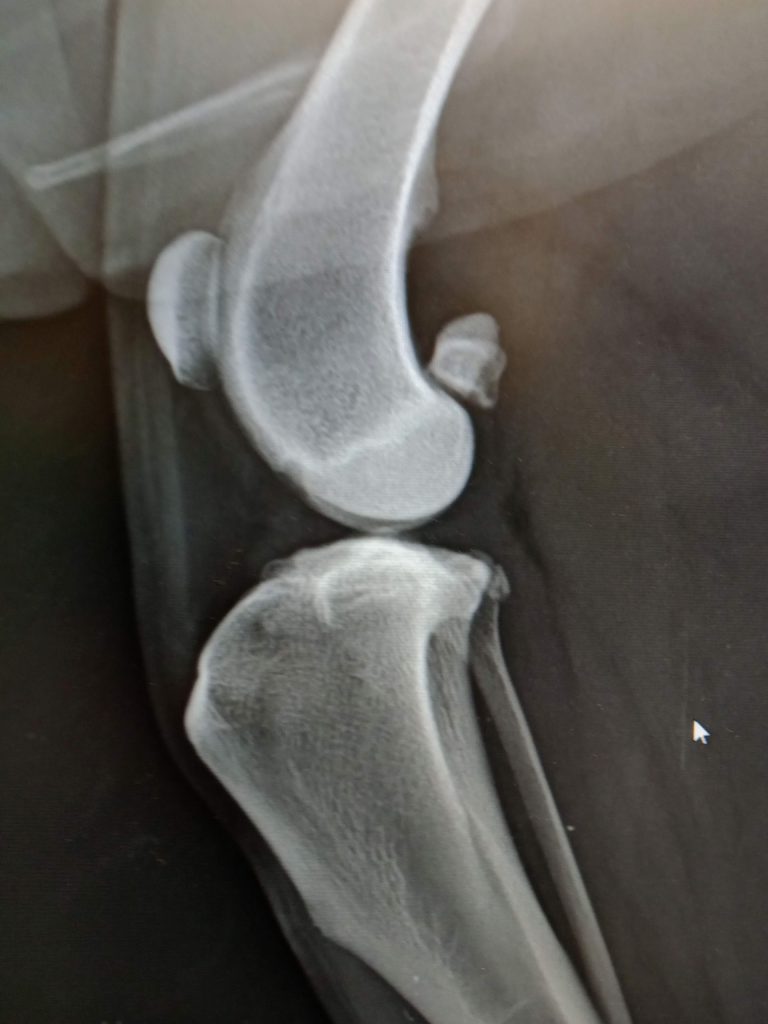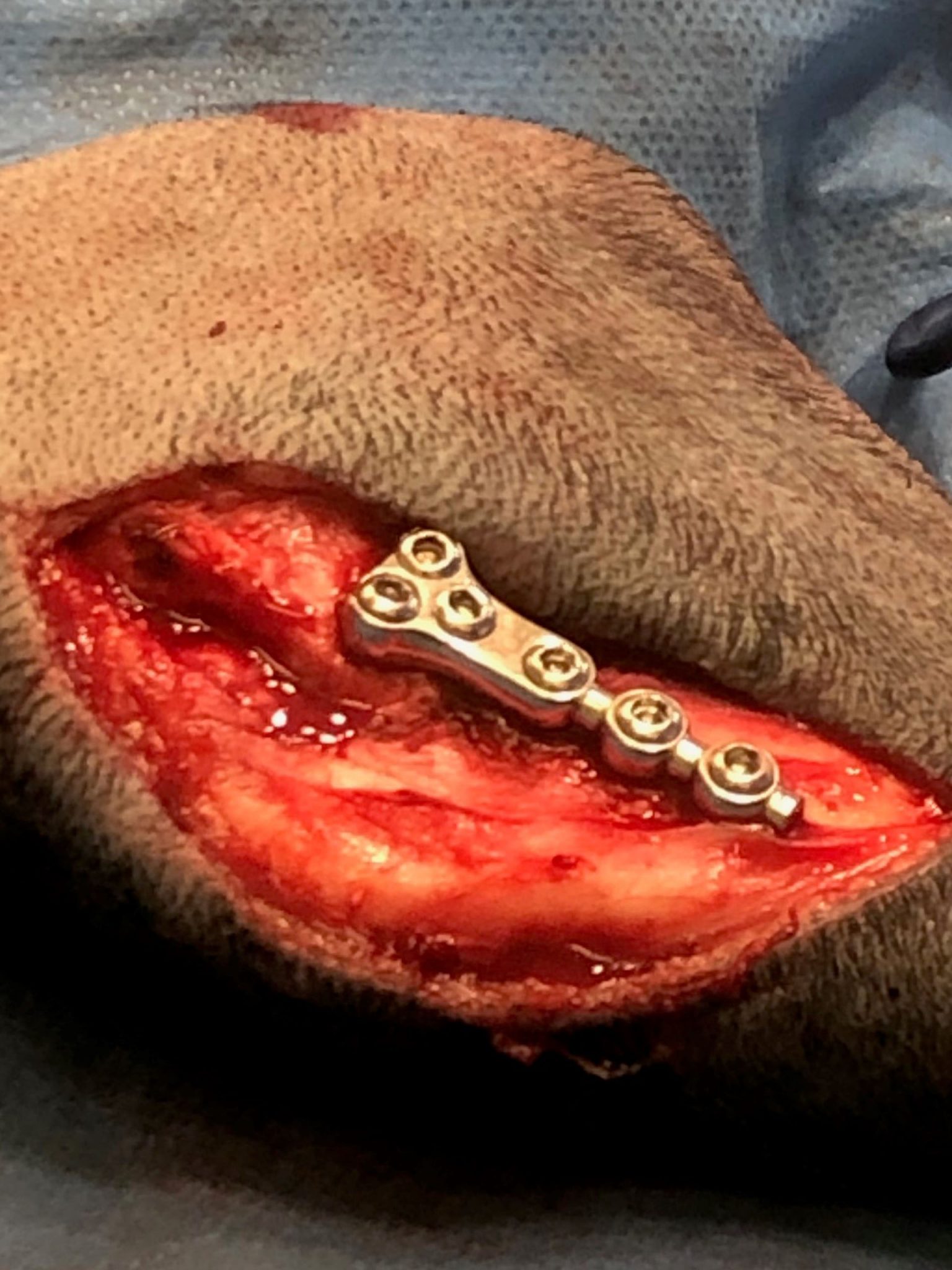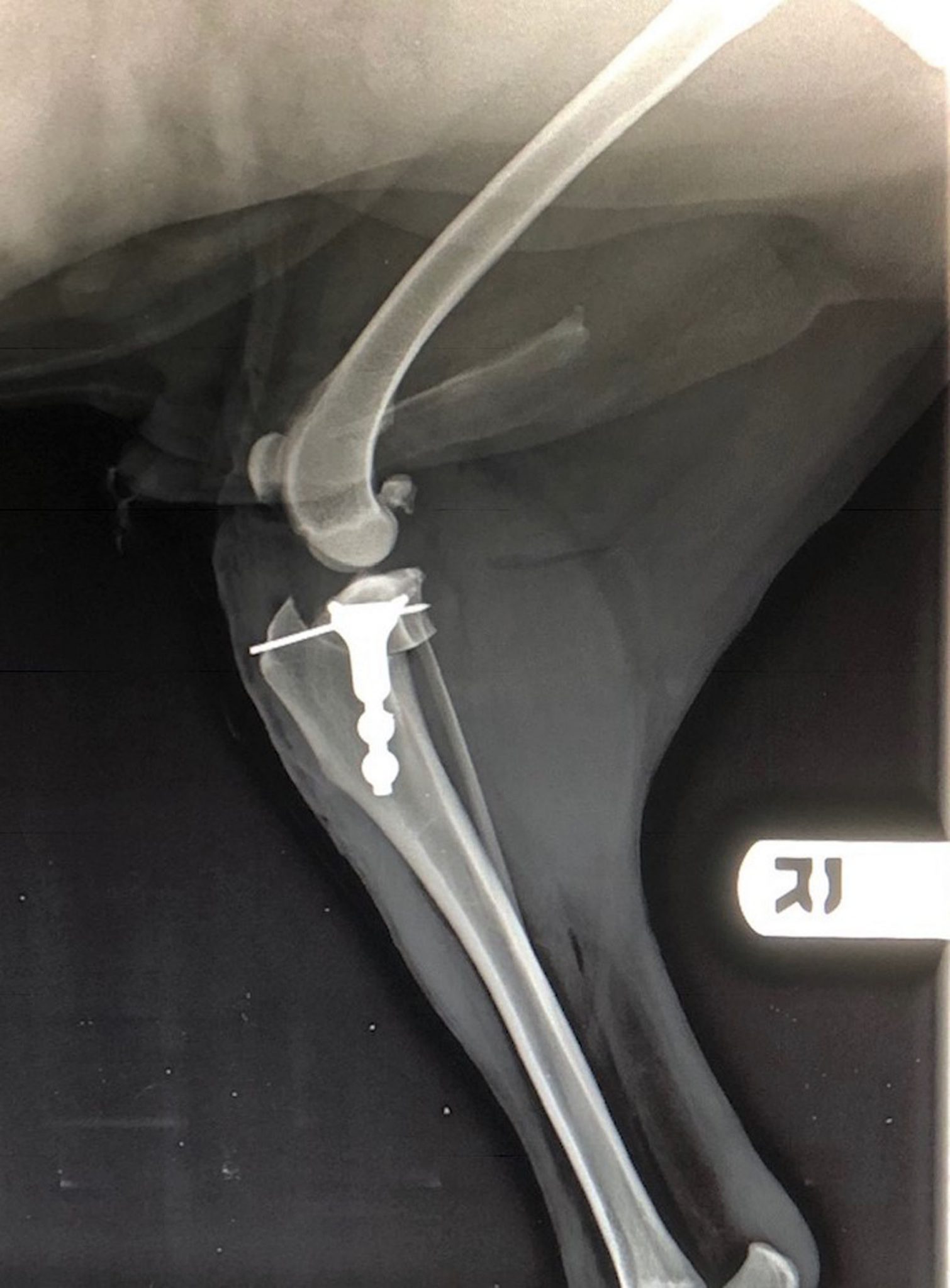Cruciate Ligament Injury and TPLO Surgery at Pittwater Animal Hospital
Dogs are particularly prone to damage to the cruciate ligament in the knee. This central stabilizing ligament, when injured or torn, results in pain and instability of the joint—especially in medium to large breed dogs. In these cases, TPLO (Tibial Plateau Levelling Osteotomy) surgery is usually the most effective treatment.
Cruciate injuries are equally debilitating in humans, with similarly complex surgery and long recovery times. To get the best outcomes, a skilled surgical team, stable implant system, and structured aftercare are essential.
Without surgery, a dog’s mobility is significantly compromised, and the strain on the opposite knee increases the risk of a second injury.
At Pittwater Animal Hospital, we have a well-established protocol for managing cruciate injuries with TPLO surgery. All dogs undergo:
-
Sedation and pre-surgical diagnostic imaging
-
Surgical consultation with our specialist team
-
Surgery using a stable implant plate system
-
Pain relief and post-op medications
-
Structured recheck visits including post-operative x-rays
-
Cartrophen injection course to support joint health
We now also recommend:
-
An overnight stay at NEVS Emergency Hospital on the night of surgery for continuous post-op monitoring and pain management
-
Professional rehabilitation from two weeks post-surgery, which can be arranged externally
Follow Jet’s Cruciate Journey
Jet is an 8-year-old Bordoodle (Border Collie x Poodle). About 16 months before his surgery, he came to us for intermittent right hindlimb lameness. His knee (stifle) was painful but not unstable, so we managed him with rest and anti-inflammatories.
Jet loves chasing balls. Over a year later, during a vigorous play session, Jet became suddenly and severely lame. This time, examination revealed instability in the right stifle—he had ruptured his cruciate ligament.
Jet was assessed under general anaesthetic by Dr Jill King. X-rays showed:
-
Right stifle instability with joint effusion
-
Changes in the left hip indicating mild dysplasia and arthritis

The Right Hip fits into the hip joint like a smooth ball, but the Left Hip has knobbly changes indicating hip dysplasia and arthritis.

Our specialist TPLO surgeon, Dr Eugene Buffa, reviewed the imaging and prepared a surgical plan using the latest generation plate and screw system, offering improved stability during healing.
Jet’s Surgery and Recovery
Jet was admitted to surgery the next day. His leg was clipped, cleaned, and prepped. Under sterile conditions, Dr Buffa performed the TPLO procedure with assistance from our nursing team. The damaged ligament was addressed, the tibia reshaped, and the new stabilizing implant secured into place.


Post-op x-rays confirmed correct alignment and placement of the implant.
Jet was transferred to NEVS Emergency Hospital for overnight care, where he was closely monitored and kept comfortable with advanced pain relief.
Aftercare and Rehabilitation
Jet returned home the following day with:
-
Oral pain relief
-
Antibiotics
-
Detailed post-op instructions
At 10 days, sutures were removed and his cartrophen injection course commenced.
Although we no longer provide in-house physiotherapy, we strongly recommend engaging a qualified canine rehabilitation therapist starting at two weeks post-op. Early movement and guided exercises are key to optimal recovery.
At 6 weeks, Jet returned to Pittwater Animal Hospital for post-op x-rays (performed awake, with gentle handling). Healing was progressing well and Jet was moving comfortably. The surgeon was pleased with his recovery.
TPLO Surgery at Pittwater – What You Can Expect
Our updated cruciate surgery protocol ensures:
-
Early diagnosis with sedation and x-rays
-
Specialist consultation and implant selection
-
Modern, stable TPLO implants
-
Overnight recovery at NEVS
-
Ongoing pain management and joint support
-
Post-op imaging and clear rehab guidance
If your dog is limping, don’t wait. Early diagnosis and expert treatment can make all the difference.
📞 Call us on 9913 7979
📧 Or email reception@pittvets.au
👇
Make an Appointment with the Vet →
Specialist TPLO surgery at Pittwater Animal Hospital
